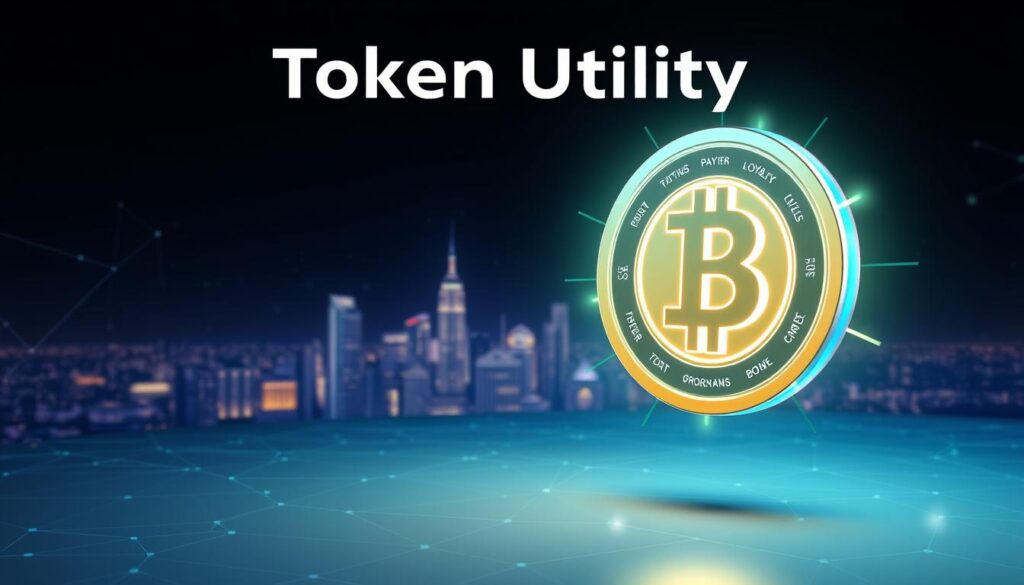This guide gives a practical path from idea to a working digital currency. It lays out choices: build a new blockchain, fork an existing chain, or issue a token on a major platform.
Expect clear steps for defining purpose, designing tokenomics, and selecting consensus and developer tools. You will see trade‑offs in time, cost, and control when choosing a platform.
Timing matters: tokens can be deployed in minutes on networks like Ethereum or BNB Chain, while a new chain needs more engineering and hardware. Market fit drives adoption, so align the asset with a real audience before any code.
Security and compliance are non‑negotiable. We cover encryption, audits, MFA, and U.S. AML/KYC and tax basics so you can make sure protections are built in from day one.
Bookmark this guide as a reference for planning, documentation, and go‑to‑market steps that help a project gain trust and list credibly in the wider crypto market.
What Creating a Cryptocurrency Involves Today
Turning an idea into usable digital money requires choices about network control, costs, and user trust. A cryptocurrency is digital money protected by cryptography and recorded on a blockchain, a decentralized ledger of blocks that store transaction data.

User intent matters: you want an asset people can hold, send, and rely on. At a basic level, cryptography secures account keys while distributed nodes validate blocks and create an immutable history without central intermediaries.
Decide between a coin and a token. Coins run on their own blockchains and offer protocol-level control over consensus, monetary policy, and upgrades. Tokens are issued on existing blockchains like Ethereum and inherit security, tooling, and validators.
- Common uses: payments, smart-contract utility, rewards, voting, and tokenized assets.
- Trade-offs: tokens are faster and cheaper to deploy; coins give full sovereignty but need node operations and ongoing maintenance.
- Adoption hinges on supply, distribution, utility, and clear documentation to build trust and liquidity.
Quick pointer: if speed and lower cost are priorities, start with a token. If protocol control and bespoke features matter most, plan for a coin and its operational responsibilities.
How to Create and Launch Your Own Cryptocurrency
Choose the path that fits your goals. Pick an approach based on desired control, speed, and ecosystem reach. Each way changes technical needs, budgets, and timeframes.

Three primary ways
- Build a new blockchain: Maximum sovereignty over consensus mechanisms, monetary policy, and upgrades. This demands protocol engineers, node operators, and ongoing ops.
- Fork an existing chain: Faster customization using proven code. Good when you need unique features but prefer a tested base.
- Issue a token on an established platform: Fastest route; many tokens deploy in 5–20 minutes on networks like Ethereum, BNB Chain, or Polygon.
Time, funds, and resource considerations
Tokens minimize development time and initial funds, though audits, integrations, and listings still cost. New chains require larger teams, hardware, and longer development cycles.
Mapping goals to the right build path
- Scope requirements and draft a short white paper.
- Build a prototype, run audits, and spin a testnet.
- Deploy mainnet or token, then monitor operations and plan upgrades.
Tip: Match project needs — DeFi composability favors popular blockchains; unique protocol features push toward a fork or fresh chain. Clear roadmaps reduce launch risk and build trust.
Define Purpose, Tokenomics, and Use Cases Before You Build
Define the real-world need your design answers, who benefits, and what success looks like. This purpose-first approach cuts risk and guides technical choices for any cryptocurrency effort.
Problem-solution fit and target audience
Start by describing the user pain, target market, and why a blockchain solution is justified over legacy tools. Validate needs with interviews and short pilots before writing protocol code.
Utility design
List core capabilities: payments, programmable access via smart contracts, tokenized assets, or data verification. Tie each capability to a clear user journey and measurable outcomes.

- Set rules: total supply, emissions, inflation/deflation, and vesting schedules.
- Align incentives: allocate funds for grants, liquidity, and community rewards to favor productive participation.
- Governance: decide voting rights, proposal flow, and on-chain execution.
Document methodology in a clear white paper and litepaper. Address regulatory posture under U.S. frameworks, disclose risks, and make sure the model handles liquidity, volatility, and exchange integrations. Map distribution to project milestones and validate with users early.
Select Consensus Mechanisms and a Blockchain Platform
Picking the right consensus and network shapes performance, fees, and trust for your digital currency.
Consensus mechanisms define validator selection, finality, throughput, and decentralization. Common options include Proof of Work (high security, energy intensive), Proof of Stake (energy efficient, capital-based security), delegated proof stake (token holders elect validators), PBFT (fast, suited for permissioned setups), and hybrid mixes for tailored needs.

Evaluate platforms like Ethereum, BNB Chain, Polkadot, Solana, and Cardano by developer tooling, fees, throughput, and wallet support. EVM-compatible platforms ease porting of smart contracts and wallets.
| Consensus | Typical Use | Pros | Cons |
|---|---|---|---|
| Proof of Work | Public chains | Strong security, battle-tested | High energy, slower finality |
| Proof of Stake | Public & hybrid | Lower energy, faster blocks | Centralization risk via stake concentration |
| Delegated Proof Stake | High throughput apps | Fast, low fees | Fewer validators, governance trade-offs |
| PBFT / Hybrid | Permissioned networks | Low latency, deterministic finality | Scales poorly across many nodes |
Shortlist two or three candidate platforms and run test deployments. Check fees, block times, interoperability, and security (validator diversity, client audits) before committing a token or larger protocol effort.
Design the Network: Nodes, Architecture, and Internal Rules
Designing a robust network starts with clear roles for nodes, a defined topology, and host choices that match operational needs.
Nodes and hosting
Nodes verify and propagate data across the blockchain. Decide public versus private access, and choose cloud or on‑prem hosting based on compliance and scale.
OS baselines such as Ubuntu or Fedora are common for validators. Size CPU, RAM, storage, and add GPUs only when proof models require them.
Address, keys, and block rules
Set address formats, key derivation paths, and signature schemes early. Use HSMs or secure enclaves for key management, with backup, rotation, and recovery plans.
Define block limits, fee mechanics, and transaction quotas. These internal rules shape throughput, token economics, and user experience.
Architecture and operations
- Choose permissioned or permissionless architectures to match governance and regulatory needs.
- Plan upgrades, client diversity, and minimal‑downtime releases for creation and maintenance.
- Implement monitoring, alerting, and runbooks for mempool health, validator performance, and fork detection.
| Role | Purpose | Typical Hosts |
|---|---|---|
| Full node | Validate blocks, store chain | Cloud, on‑prem |
| Light node | Client access, low resources | Edge devices, mobile |
| Validator | Consensus work | Hardened Linux servers |
APIs, Interfaces, and Security: Building a Usable, Safe Platform
APIs and interfaces form the connective tissue that turns protocol rules into real-world services. A clear API strategy speeds integration, reduces errors, and improves user confidence when moving tokens.
Essential APIs and popular providers
Key API types: wallet APIs, exchange integrations, and payment gateways for deposits, withdrawals, swaps, and merchant checkout.
- Providers to consider: Infura (Ethereum), BlockCypher, Bitcore, Coinbase API, ChromaWay, Tierion, Gem, Colu, Colored Coin APIs.
- Use SDKs and web3 libraries so front ends call smart contracts and nodes safely.
Front end, back end, and UX patterns
Keep UI components simple and responsive. Use React or Angular for clean flows, with Node.js or Python on the back end to handle retries and rate limits.
Plan observability: log API calls, track errors, and surface metrics for failed transactions and throughput.
Security by design
Encrypt traffic (TLS everywhere), enforce hardened auth with MFA, and run SAST/DAST scans. Use hardware wallets and tested libraries so clients never expose private keys.
Commission third‑party audits before public use and add circuit breakers and caching for resilience.
For practical integration details, see the API integration guide that covers common providers and patterns aligned with your selected blockchain.
Compliance and Go‑to‑Market: U.S. Legal Steps and Launch Strategy
Early compliance work shapes product design and prevents costly corrections after public release.
Entity and licensing — Form an LLC or corporation in the U.S. and evaluate state money transmission licenses if activities touch fiat or custodial wallets. Register with FinCEN when offering money transmission or exchange services and consult counsel on securities risk for any token distribution.
AML/KYC and recordkeeping — Build an AML program with customer ID checks, sanctions screening, and suspicious activity monitoring that meets FinCEN expectations. Retain records and implement automated transaction monitoring so reports can be produced quickly.
Tax, reporting, and product controls
Choose inventory and gain recognition methods early. Track cost basis and transaction history so stakeholders can meet IRS reporting rules.
Translate rules into features: onboarding flows with KYC, geofencing for restricted jurisdictions, and real‑time monitoring for risky transactions.
Market entry and credibility
Sequence steps: legal setup, audits, clear documentation, community building, then exchange and aggregator listings. Allocate funds for audits, legal counsel, and security bounties to improve credibility.
- Community channels: Discord, Telegram, Reddit, Twitter, BitcoinTalk for organic growth.
- Partnerships and press drive visibility for tokens and platform listings.
- Measure traction with KPIs: active users, transaction volume, and liquidity.
| Area | Key Actions | Expected Outcome |
|---|---|---|
| Legal & Entity | Form LLC/corp; assess state licenses; FinCEN registration | Reduced regulatory exposure; clearer path to listings |
| AML/KYC | Identity checks; sanctions screening; SAR processes | Compliance with U.S. rules; faster banking integrations |
| Tax & Reporting | Implement gain tracking; maintain ledgers; prepare filings | Transparent reporting; fewer audit surprises |
| Go‑to‑Market | Audits, documentation, community, listings | Stronger trust; better market reception |
Final step — Learn from past token sales: weak utility and poor compliance harm adoption. Prioritize transparent roadmaps, regular updates, and responsive support to earn trust and scale safely.
Conclusion
, A concise roadmap helps teams match token economics with real users and operational limits.
Start by aligning purpose, tokenomics, and distribution with measured use cases. Choose the right blockchain platform; tokens on platforms like Ethereum or BNB Chain speed time, while a custom crypto coin gives control for niche solutions.
Prioritize layered security: audits, continuous monitoring, hardware wallets, and hardened clients protect keys plus transactions. Run a testnet or sandbox rollout before mainnet to validate fees, performance, and UX.
Plan resources realistically for engineering, legal, listings, and support. Ship iteratively, measure uptake, refine features from feedback, and sequence partnerships only after core reliability is proven. With solid foundations and compliance, a digital currency can grow sustainably.
FAQ
What does building a digital currency involve today?
Building a digital currency covers idea validation, choosing between a native coin or a token, selecting consensus rules, designing tokenomics, coding network logic or smart contracts, setting up nodes and APIs, and preparing legal and go‑to‑market plans.
Coin versus token — which path fits a new project?
A native coin requires creating or forking a blockchain and offers full control over consensus and block rules. A token is faster and cheaper when issued on platforms like Ethereum or BNB Chain, but relies on the host network’s security and fees.
What are the common technical routes for launching a project?
Teams typically choose between building a new blockchain, forking an existing chain, or issuing a token on an established platform. Each route trades off speed, cost, control, and long‑term maintenance needs.
How much time, money, and resources are usually needed?
A token launch can take weeks with modest costs for audits and listings. Launching a new chain often needs months of development, node ops, and security work with significantly higher budgets and experienced engineers.
How should project goals influence the build path?
If you need custom consensus, low‑level protocol changes, or on‑chain governance, a native chain or fork is best. For payments, NFTs, or DeFi features that leverage existing ecosystems, a token on Ethereum, Solana, or similar is more practical.
What is essential when defining purpose and tokenomics?
Start with a clear problem statement and target audience. Define utility (payments, governance, assetization), total supply, issuance schedule, distribution plan, and incentive structures to align users and validators.
Which consensus mechanisms are commonly used?
Popular choices include Proof of Work, Proof of Stake, Delegated Proof of Stake, PBFT, or hybrid models. The choice affects decentralization, throughput, energy use, and validator economics.
Which blockchain platforms should I consider?
Evaluate Ethereum, BNB Chain, Polkadot, Solana, and Cardano based on fees, throughput, interoperability, and developer tools. Each ecosystem has trade‑offs in cost, latency, and audience reach.
What network design decisions matter most?
Decide on node roles, hosting (cloud vs. on‑prem), permissioned versus permissionless access, address and key formats, block timing, and transaction validation rules to match security and performance needs.
What APIs and integrations are essential?
Wallet interfaces, exchange APIs, payment gateways, and blockchain node providers are core. Popular services include Infura for Ethereum, BlockCypher, and provider SDKs that speed development and improve reliability.
How should front end, back end, and UX be handled?
Build intuitive wallet flows, clear transaction states, and robust error handling. Optimize for low latency and guide users through private key management, confirmations, and recovery options.
Which security measures must be prioritized?
Apply secure coding practices, encryption, multi‑factor authentication, audited smart contracts, penetration testing, and regular node monitoring. Engage reputable auditors before any public sale or launch.
What U.S. legal steps are required for a compliant launch?
Consider entity formation, licensing requirements, AML/KYC programs, registration with FinCEN where applicable, and counsel on securities laws. Legal guidance is critical to avoid regulatory risk.
How should tax and reporting be handled?
Maintain transparent ledgers and bookkeeping. Consult tax professionals for reporting requirements on token sales, capital gains, and corporate income. Proper records help with audits and compliance.
What are effective go‑to‑market and community strategies?
Build trust with clear documentation, audits, partnerships, social engagement, and listings on reputable exchanges. Focus on developer tooling, community incentives, and consistent communications.
Which tools help with testing and deployment?
Use testnets, continuous integration, formal verification tools for contracts, node orchestration platforms, and staging environments. These reduce deployment risk and uncover edge cases early.
How important is interoperability and cross‑chain strategy?
Interoperability expands liquidity and use cases. Consider bridges, wrapped assets, or parachain models like Polkadot for seamless cross‑chain transfers and broader market access.
What ongoing operational needs should teams expect?
Expect continuous node maintenance, security updates, community support, governance operations, liquidity management, and regulatory monitoring for long‑term project health.
When should a project seek external partners or vendors?
Bring in specialists for audits, exchange listings, legal compliance, infrastructure providers like Infura, and marketing firms when internal expertise is limited or speed to market matters.
What are common pitfalls that derail projects?
Neglecting security audits, ignoring regulatory requirements, poor tokenomics, insufficient developer documentation, and weak community engagement often cause failure. Plan deliberately to avoid these traps.


No comments yet